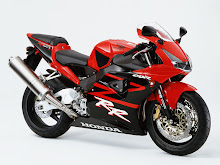
This Honda CR250 was a little beat up but I was able to buy it for a song. When I bought the bike it had low compression, the plastics were faded and a couple bits were worn, but all in all it was a fairly solid old ride.
The 1986 Honda CR250R was the last year of the rear drum brake. It boggles my mind why Honda was still running a drum brake in the rear when the other manufacturers had updated to discs. I don’t know for sure, but I would be willing to be that the factory Honda racers in 1986 had disc brakes on their race bikes. (Anyone know a little history about this? I’d love to hear it.). However, Honda did jump right to a dual piston front disk brake, which sort of compensates for the weak rear.
Despite the low compression I was able to get this bike running real well. It needed a new piston and rings for sure, but that didn’t stop me from putting a little saddle time on it. It amazes me how little the performance of off road bikes has changed over a 20 year period. Sure new bikes have better suspension, the motors run a little crisper, and they’ve shaved off 15 pounds, but to an amateur rider all of those factors amount to very little. Most off-road riders and racers run new bikes simply because of the hype and marketing. The fact of the matter is that any good rider on a bike from the 80’s will still whoop the pants off an amateur on the latest model 250. Once liquid cooled motors and mono shock bikes became common place, the rider was the only thing that made a real significant different on lap times.
This 1986 ran very strong. I don’t recall what carb it had, I know my 1986 KX250 had an enormous Kehein that was the size of a bible. The Honda is certainly a little better carbureted and pulled harder up top, but this could be purely a factor of superior jetting rather than components. The CR250 suspension was also a bit more progressive than the KX250 with an inverted front fork, the KX250 had a bit of a spongy quality to it which made whoop sections tricky.
By all accounts the 1986 CR250 was the superior bike to the KX250, save the rear brake. Dirt, mud, water, and fast motors simply do not mix with drum brakes.
The 1986 Honda CR250R was the last year of the rear drum brake. It boggles my mind why Honda was still running a drum brake in the rear when the other manufacturers had updated to discs. I don’t know for sure, but I would be willing to be that the factory Honda racers in 1986 had disc brakes on their race bikes. (Anyone know a little history about this? I’d love to hear it.). However, Honda did jump right to a dual piston front disk brake, which sort of compensates for the weak rear.
Despite the low compression I was able to get this bike running real well. It needed a new piston and rings for sure, but that didn’t stop me from putting a little saddle time on it. It amazes me how little the performance of off road bikes has changed over a 20 year period. Sure new bikes have better suspension, the motors run a little crisper, and they’ve shaved off 15 pounds, but to an amateur rider all of those factors amount to very little. Most off-road riders and racers run new bikes simply because of the hype and marketing. The fact of the matter is that any good rider on a bike from the 80’s will still whoop the pants off an amateur on the latest model 250. Once liquid cooled motors and mono shock bikes became common place, the rider was the only thing that made a real significant different on lap times.
This 1986 ran very strong. I don’t recall what carb it had, I know my 1986 KX250 had an enormous Kehein that was the size of a bible. The Honda is certainly a little better carbureted and pulled harder up top, but this could be purely a factor of superior jetting rather than components. The CR250 suspension was also a bit more progressive than the KX250 with an inverted front fork, the KX250 had a bit of a spongy quality to it which made whoop sections tricky.
By all accounts the 1986 CR250 was the superior bike to the KX250, save the rear brake. Dirt, mud, water, and fast motors simply do not mix with drum brakes.

No comments:
Post a Comment